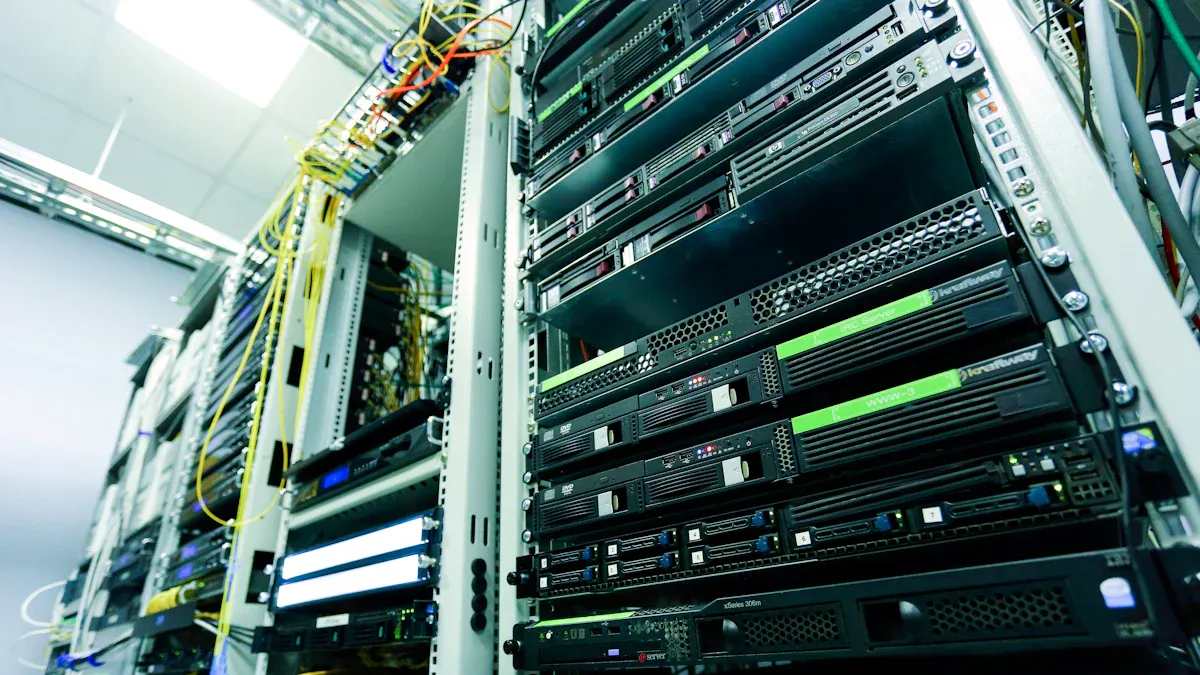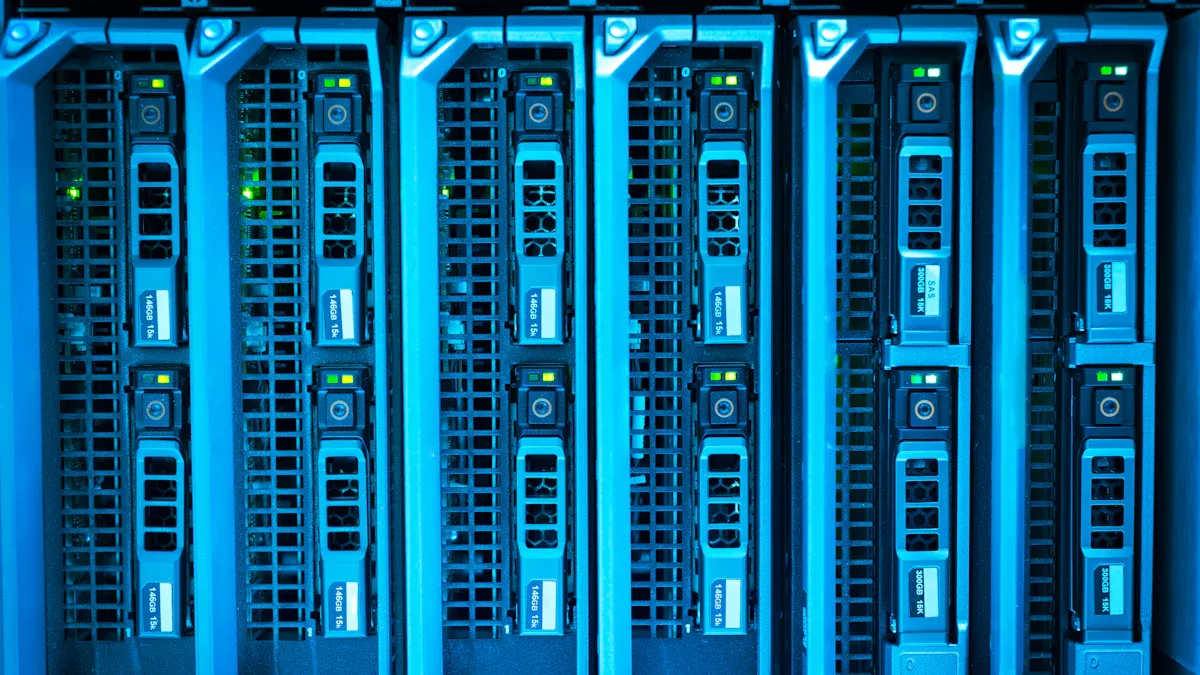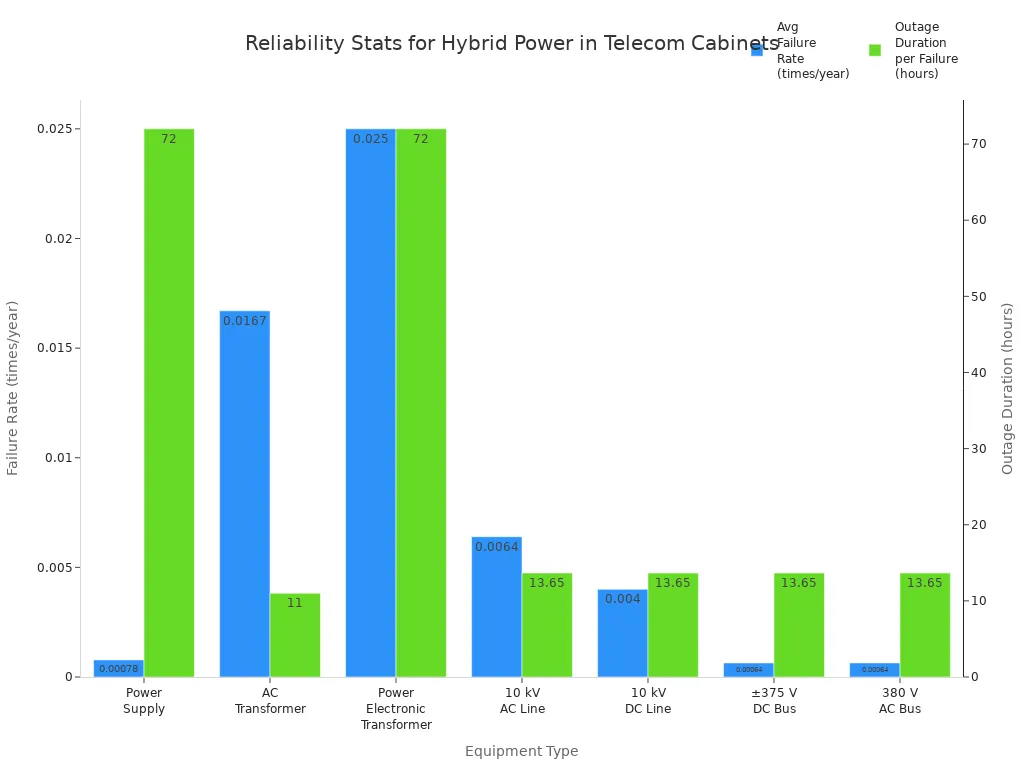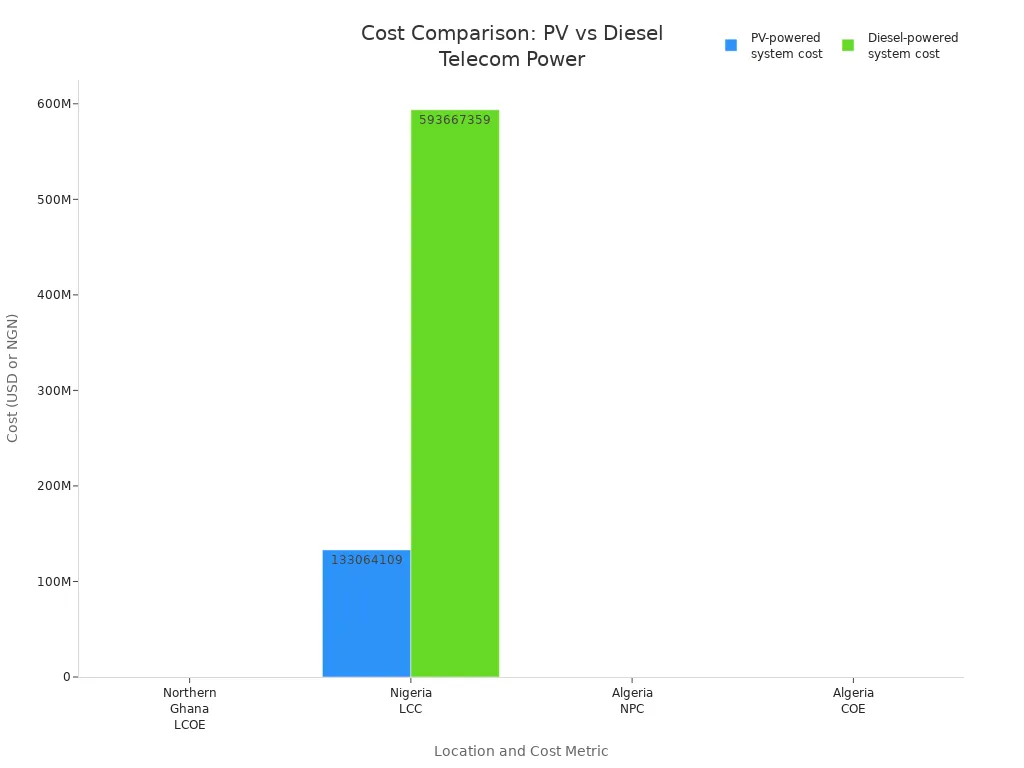Understanding ESTEL PV-Powered Telecom Cabinets in 2025

You encounter the ESTEL PV-powered telecom cabinet as a vital part of modern telecom infrastructure. This cabinet uses solar technology to deliver reliable power to telecom equipment, even in remote or off-grid locations. By integrating the PV Panel for Telecom Cabinet, you support both renewable and sustainable communication infrastructure. Over the past five years, telecom operators worldwide have increased adoption of solar solutions to boost connectivity and achieve sustainability goals. The table below highlights this trend:
Aspect | Evidence Summary |
|---|---|
Adoption Trend | Significant increase in adoption of solar-powered telecom infrastructure over the past five years driven by network expansion, cost-effectiveness, and renewable energy push. |
Regional Leadership | Asia Pacific leads (~42% market share in 2024) with rapid expansion in India, China, Indonesia; followed by growth in Africa and Latin America. |
As you seek renewable energy options, the power cabinet ensures efficient power flow, reduces emissions, and meets the rising demand for renewable energy in telecom operations.
Key Takeaways
ESTEL PV-powered telecom cabinets use solar energy to provide reliable power for telecom equipment, especially in remote or off-grid areas.
These cabinets include solar panels, batteries, controllers, and power management systems that work together to ensure stable and efficient energy flow.
Hybrid power systems combining solar, batteries, and backup sources increase network reliability and reduce operational costs by about 35%.
Switching to solar-powered cabinets lowers fuel use and carbon emissions, supporting sustainability and saving money on maintenance and fuel.
Modular and customizable designs let you scale and adapt your telecom power system as your network grows, ensuring long-term connectivity.
Overview
What Is a PV-Powered Telecom Cabinet
You see a PV-powered telecom cabinet as a specialized enclosure that houses and protects telecom equipment. This cabinet uses solar panels to capture solar energy and convert it into electrical power. The power cabinet stores this energy in batteries, ensuring that telecom devices run smoothly even when sunlight is low. You rely on the cabinet to deliver stable power to your telecom system, whether you operate in a city or a remote area.
The cabinet includes several key parts:
Solar panels that collect solar energy.
A power cabinet that stores and manages energy.
Batteries that keep power available at all times.
Controllers that regulate the flow of power.
You benefit from this cabinet because it reduces your need for traditional grid power. The cabinet supports your telecom network by providing clean, renewable energy. You help build a sustainable communication infrastructure when you choose this solution.
Note: The cabinet design protects sensitive telecom equipment from harsh weather and physical damage.
Role in Telecom Infrastructure
You play a vital role in modern telecom infrastructure when you use a PV-powered telecom cabinet. The cabinet ensures that your telecom network stays active, even during power outages. You can deploy the cabinet in areas where grid power is unreliable or unavailable. The power cabinet supports your telecom system by delivering consistent power to base stations, repeaters, and other telecom devices.
You notice that the cabinet helps telecom operators expand their networks quickly. The solar power cabinet reduces installation time and lowers operational costs. You also see that the cabinet supports the shift toward renewable energy in the telecom sector. By using solar energy, you cut carbon emissions and support global sustainability goals.
The cabinet increases network reliability.
The power cabinet enables telecom services in rural and urban locations.
You ensure continuous telecommunication services with this system.
You find that the cabinet is now a core part of telecom infrastructure worldwide. The power cabinet helps you meet the growing demand for connectivity and energy efficiency.
Components

PV Panel for Telecom Cabinet
You rely on the pv panel for telecom cabinet as the main source of solar energy. These panels capture sunlight and convert it into electrical power for your cabinet. You can choose from several types of panels, each with different efficiency and performance levels. The table below helps you compare the most common options:
PV Panel Type | Efficiency Range (%) | Performance Level |
|---|---|---|
Monocrystalline | Highest efficiency | |
Polycrystalline | 15 - 17 | Medium efficiency |
Thin-film | 10 - 13 | Lowest efficiency |
You often select monocrystalline panels for your power cabinet because they offer the highest efficiency and best performance. Polycrystalline panels provide a balance between cost and efficiency, while thin-film panels give you flexibility but lower performance. When you install a pv panel for telecom cabinet, you want to maximize energy output and ensure reliable power for your telecom equipment.
You also consider the lifespan and durability of your panels. Most monocrystalline panels last around 30 years, while polycrystalline panels last about 25 years. Thin-film panels have a shorter lifespan, usually between 10 and 20 years. Over time, all panels experience some degradation. In the first year, you may see a 1% to 3% drop in efficiency. After that, the annual degradation rate is about 0.7% to 0.9%. By year 25, your panels still deliver about 80% of their original efficiency. You can extend the life and performance of your pv panel for telecom cabinet by choosing high-quality panels and following good maintenance practices.
Tip: Always check the warranty details and environmental ratings before selecting panels for your cabinet. This ensures long-term performance and protection against harsh conditions.
Battery Storage
You depend on battery storage to keep your power cabinet running when sunlight is low or at night. The battery stores excess solar energy during the day and releases it when needed. You have several battery chemistries to choose from:
Lead Acid batteries (AGM, GEL, Flooded, Lead Carbon) are common in telecom cabinets. They offer reliability and cost-effectiveness.
Nickel-based batteries, such as Nickel Cadmium (NiCd) and Nickel Iron, provide durability and stable performance.
Lithium batteries, especially Lithium Iron Phosphate (LiFePO4), stand out for their safety, long cycle life, and compatibility with solar charging. These batteries often include a built-in Battery Management System (BMS) for added protection.
You select the right battery based on your energy needs, cabinet size, and site conditions. Lithium batteries are becoming more popular in modern power cabinet designs because they support higher energy density, faster charging, and longer service life. You also benefit from improved safety and easier indoor installation.
MPPT Controllers
You use MPPT (Maximum Power Point Tracking) controllers to boost the efficiency of your solar power cabinet. These controllers help you harvest 20–30% more energy compared to older PWM controllers. MPPT controllers can reach efficiencies up to 98% or higher, making them essential for your telecom cabinet.
MPPT controllers adjust the electrical operating point of your pv panel for telecom cabinet to maximize energy extraction, even when sunlight or temperature changes.
They convert the higher voltage DC from your panels to the lower voltage needed by your batteries, reducing energy loss.
MPPT technology supports lithium battery charging with custom profiles, which extends battery life and improves performance.
Advanced MPPT controllers offer smart features like Bluetooth connectivity, remote monitoring, and programmable charging settings.
You benefit from robust protection features and compliance with safety standards, ensuring your cabinet operates reliably in all conditions.
You find that MPPT controllers allow you to use smaller wire sizes and support larger solar arrays, which lowers installation costs and increases system flexibility.
Power Management
You rely on advanced power management units to control and distribute energy within your power cabinet. These units monitor the flow of solar energy from the pv panel for telecom cabinet, manage battery charging, and supply steady power to your telecom equipment. Power management systems protect your devices from overvoltage, short circuits, and temperature extremes.
You often see cabinets with modular designs, which let you upgrade or expand your system as your energy needs grow. Cooling systems inside the cabinet help maintain stable temperatures, saving energy and extending the life of your equipment. Durable enclosures made from galvanized steel or aluminum shield your cabinet from moisture, dust, and extreme weather.
Note: Smart controllers in your power cabinet can switch between solar, grid, and backup sources automatically. This ensures you always have reliable power, even if one source fails.
Hybrid Power Systems and Integration
You benefit from hybrid power systems that combine solar, wind, and grid power in your cabinet. These systems reduce your reliance on fossil fuels and lower your energy costs. Smart control modules inside the cabinet dynamically manage and prioritize each power source based on availability and demand. You can store excess energy in batteries for use during cloudy days or at night.
Hybrid power systems improve reliability by using multiple energy sources to maintain a steady power supply. You find these cabinets especially valuable in remote or disaster recovery sites where grid power is unreliable. Modular cabinet designs make it easy for you to scale up as your network grows, supporting fast internet and 5G expansion.
You also notice that hybrid power systems contribute to significant cost savings and environmental benefits. By integrating renewable energy sources, you help reduce operational costs and support global sustainability goals.
Operation
Solar-Powered Telecom Tower Systems
You depend on solar-powered telecom tower systems to deliver reliable power to your telecom sites. These systems use solar panels to capture solar energy and convert it into electricity. You see that solar-powered telecom tower systems are designed to meet the daily energy needs of your telecom equipment. For example, a typical 4G base station uses about 5 kW, which adds up to 120 kWh per day. If you operate a 5G base station, your energy demand can double.
You must size your solar array based on your daily energy needs and the amount of sunlight your location receives. In regions with 5 hours of peak sunlight, you need a 24 kW solar array to power a tower that uses 120 kWh per day. Solar-powered telecom tower systems allow you to run your network even in remote areas where grid power is not available. You benefit from lower operational costs and reduced carbon emissions. In the Middle East, studies show that solar and hybrid power systems for telecom towers are both economical and environmentally friendly. You achieve high reliability and cost savings by choosing solar-powered telecom tower systems.
Tip: Always calculate your daily energy consumption and local sunlight hours before installing solar-powered telecom tower systems. This ensures you have enough power for your telecom operations.
Energy Flow
You manage energy flow in your telecom cabinet by following a clear process. Solar panels collect solar energy and send it to a charge controller. The charge controller regulates the voltage and current, protecting your battery bank from overcharging or deep discharging. Modern charge controllers use MPPT technology to maximize the energy harvested from your solar panels.
Here is how energy flows in your system:
Connect the battery to the charge controller first.
Attach the solar panels to the charge controller.
Link the telecom load to the system, making sure all connections are secure and polarity is correct.
The charge controller acts as the brain, managing energy between the solar panels, battery bank, and telecom equipment.
The battery stores excess energy during the day and supplies power when sunlight is low.
An inverter converts DC power from the solar panels and batteries into AC power for your telecom devices.
Place the inverter in a well-ventilated area and check all connections regularly to prevent energy loss.
You ensure stable and reliable power for your telecom network by following these steps. Proper wiring and high-quality cables help you avoid energy loss and improve system efficiency. You keep your telecom equipment running smoothly by maintaining a balanced energy flow.
Hybrid Power Integration
You increase reliability by using hybrid power systems in your telecom cabinets. Hybrid power systems combine solar, batteries, and backup generators or grid connections. This setup ensures your telecom network stays online, even during cloudy days or unexpected outages. Batteries store extra solar energy, while backup generators provide power when both solar and battery reserves run low.
You can see the reliability of hybrid power systems in the following table:
Equipment Type | Average Failure Rate (times/year) | Power Outage Duration per Failure (hours) | Annual Failure Probability |
|---|---|---|---|
Power Supply | 0.00078 | 72 | 0.00064 |
AC Transformer | 0.0167 | 11 | 0.00002 |
Power Electronic Transformer | 0.025 | 72 | 0.00021 |
10 kV AC Line | 0.0064 | 13.65 | 0.00001 |
10 kV DC Line | 0.0040 | 13.65 | 0.000006 |
±375 V DC Bus | 0.00064 | 13.65 | 0.000001 |
380 V AC Bus | 0.00064 | 13.65 | 0.000001 |

You notice that the dual power supply system with mutual backup leads to a power failure probability close to zero. The overall reliability of the power supply system exceeds 99.999%. This matches the strict standards required for data centers and telecom operations. Hybrid power systems give you peace of mind because they keep your telecom network running without interruption.
You also support sustainability goals by reducing your dependence on fossil fuels. Hybrid power systems let you use solar energy as your main source, with batteries and backup generators as support. You achieve both high reliability and environmental benefits by integrating these systems into your telecom cabinets.
Benefits

Connectivity and Reliability
You depend on solar-powered telecom cabinets to deliver uninterrupted connectivity, even in remote or harsh environments. These cabinets combine solar and traditional power sources, which improves reliability and keeps your telecom network running. You benefit from intelligent power management and real-time monitoring, which help you spot issues early and reduce downtime. Active cooling systems protect your equipment from overheating, so you avoid thermal shutdowns and keep your network stable. You also see that advanced features like frequency-watt and volt-var functions maintain power quality and stability. With these systems, you achieve up to 98% fewer battery failures and enjoy high energy efficiency. Modular designs let you scale your power capacity as your network grows, supporting the scalability of solar telecom infrastructure and future upgrades without service interruptions.
Hybrid systems reduce operational costs by about 35% while boosting reliability.
Remote monitoring and predictive maintenance support seamless connectivity.
Solar integration ensures stable power supply, overcoming outages and voltage issues.
Compliance with industry standards guarantees safety and performance.
Cost Savings
You save money by switching from diesel-powered systems to solar-powered telecom cabinets. The table below shows how solar and hybrid systems lower costs and reduce emissions in different regions:
Location | System Type | Cost Metric | Value | Comparison / Savings |
|---|---|---|---|---|
Northern Ghana | PV/Fuel Cell | LCOE | $0.25/kWh | 67% cheaper than diesel |
Nigeria (Ogun) | PV/Battery | Life Cycle Cost | ₦133,064,109 | Lowest among all configurations |
Nigeria (Ogun) | Diesel Generator Only | Life Cycle Cost | ₦593,667,359 | Highest due to fuel and maintenance |
Ghana (Off-grid) | Hybrid PV/Diesel/Battery | Fuel Savings | 61.7% | Compared to dual diesel generators |
Ghana (Off-grid) | Hybrid PV/Diesel/Battery | OPEX Savings | >80% | With system optimization |
Algeria (Rural) | Hybrid PV/Wind/Diesel | Net Present Cost | $85,673 | Economically viable |
Algeria (Rural) | Hybrid PV/Wind/Diesel | Cost of Energy | $0.214/kWh | Lower than diesel-only systems |

You notice that solar-powered telecom cabinets cut operational expenses and fuel costs. You also reduce maintenance visits, which saves time and money. These savings make solar solutions a smart investment for your telecom operations.
Renewable Impact
You help the environment by choosing renewable energy for your telecom infrastructure. Solar-powered cabinets lower carbon emissions and reduce your reliance on fossil fuels. You support global efforts to minimize environmental contamination and ecosystem damage. Many telecom companies now commit to 100% renewable electricity and net-zero carbon emissions. You also gain energy independence, which protects you from fuel price swings and supply risks. By using energy-efficient technologies and renewable sources, you optimize energy consumption and improve overall performance. You see practical environmental benefits as more telecom towers in remote areas switch from diesel to solar. Sustainable practices, such as recycling and upcycling equipment, further enhance the environmental benefits of your telecom network.
Tip: Adopting renewable energy and energy-efficient solutions not only reduces your environmental footprint but also boosts your brand reputation and ensures compliance with regulations.
Practical Aspects
Installation
You face unique challenges when installing a PV-powered telecom cabinet, especially in remote locations. Weather can disrupt your plans. Hurricanes, floods, or long cloudy periods may damage equipment or reduce energy generation. You must prepare the site by clearing obstacles that block sunlight and ensuring the ground or rooftop is stable for mounting. Durable and adjustable mounting structures help you secure solar panels at the best tilt angle for maximum power.
You need to weatherproof all wiring and connections. This protects your cabinet from environmental damage and ensures reliable power delivery. Integration with existing telecom infrastructure can be complex. You may need advanced solar charge controllers and intelligent monitoring tools. Regular inspections help you catch issues early, such as loose connections or damaged cables. In remote areas, technical support and troubleshooting require trained personnel and smart monitoring systems.
Tip: Always check that your cabinet is weatherproof and all components are securely installed to maintain remote connectivity.
Maintenance
You keep your cabinet running smoothly by following a regular maintenance schedule. Battery health is critical. You monitor charge levels and temperature, replacing aging batteries before they fail. Preventive maintenance helps you avoid unexpected downtime, especially in remote sites where access is limited. You inspect for loose connections, damaged cables, and signs of wear. Weatherproofing remains essential. You check seals and connectors to protect your cabinet from harsh conditions.
You use intelligent monitoring tools to track power performance and spot issues early. These tools alert you to problems before they affect remote connectivity. You also train your team to handle troubleshooting and repairs quickly. This approach reduces operational expenses and keeps your power system reliable.
Customization
You can customize your cabinet to fit any telecom site, large or small. Modular designs let you scale your cabinet for different power needs and equipment types. You choose from flexible deployment options, such as pole-mounting, pad-mounting, or roadside installation. This adaptability supports remote connectivity in diverse environments.
Manufacturers offer cabinets with customizable battery racks for various battery types, including lead acid and nickel cadmium. You select space-saving configurations and add features like intelligent ventilation or integrated air conditioning for off-grid or harsh sites. Cabinets often include integrated cooling systems, heat exchangers, and weatherproof seals to protect your equipment and maintain optimal power performance.
You benefit from modular parts that allow upgrades and maintenance without service interruption. This scalability ensures your cabinet grows with your network. Custom solutions integrate all necessary components, delivering operational savings and supporting long-term remote connectivity.
You shape the future of telecom by choosing ESTEL PV-powered telecom cabinets. These cabinets use renewable energy to power your telecom network, supporting both sustainability and cost savings. You benefit from advanced materials and weatherproof designs that boost reliability and reduce maintenance. With modular cabinet systems, you expand your telecom coverage quickly and efficiently. Real-time monitoring and AI-driven tools help you maintain high operational efficiency and minimize downtime. You see improved equipment uptime, longer battery life, and lower operational costs. By adopting these solutions, you support a greener, more reliable telecom infrastructure for 2025 and beyond.
Choosing ESTEL means you invest in a telecom network that is efficient, resilient, and ready for the demands of tomorrow.
FAQ
What makes a PV-powered telecom cabinet different from traditional power solutions?
You use a PV-powered telecom cabinet to harness solar energy instead of relying only on grid or diesel sources. This system improves energy efficiency, supports sustainability, and ensures uninterrupted connectivity. You also benefit from lower operational costs and enhanced reliability, especially in remote locations.
How do hybrid power systems improve telecom network reliability?
You combine solar, batteries, and backup generators in hybrid power systems. This setup keeps your telecom infrastructure running during cloudy days or outages. You achieve high reliability and maintain remote connectivity, which is essential for sustainable communication infrastructure and consistent performance.
Can you scale a solar-powered telecom tower system as your network grows?
You can easily expand your solar-powered telecom tower systems. Modular cabinet designs and flexible pv panel for telecom cabinet options support the scalability of solar telecom infrastructure. You add more panels or batteries as needed, ensuring your system meets growing energy demands and maintains efficiency.
What are the main environmental benefits of using solar energy in telecom?
You reduce carbon emissions and support renewable energy goals by using solar energy in your telecom operations. This shift brings environmental benefits, such as less pollution and lower fuel consumption. You help build a more sustainable infrastructure and promote energy independence.
How does regular maintenance affect the performance of a power cabinet?
You keep your power cabinet running at peak performance with regular maintenance. By checking batteries, cleaning panels, and monitoring system health, you ensure energy efficiency and reliability. This routine care extends equipment life and supports uninterrupted connectivity in your telecommunication network.
See Also
A Detailed Look At ESTEL Outdoor Telecom Cabinet Design
Best Materials Used In ESTEL Outdoor Telecom Cabinets 2025
Exploring The Power System Behind ESTEL Telecom Cabinets
ESTEL’s Energy Storage System With Smart Microgrid Integration
CALL US DIRECTLY
86-13752765943
3A-8, SHUIWAN 1979 SQUARE (PHASE II), NO.111, TAIZI ROAD,SHUIWAN COMMUNITY, ZHAOSHANG STREET, NANSHAN DISTRICT, SHENZHEN, GUANGDONG, CHINA


